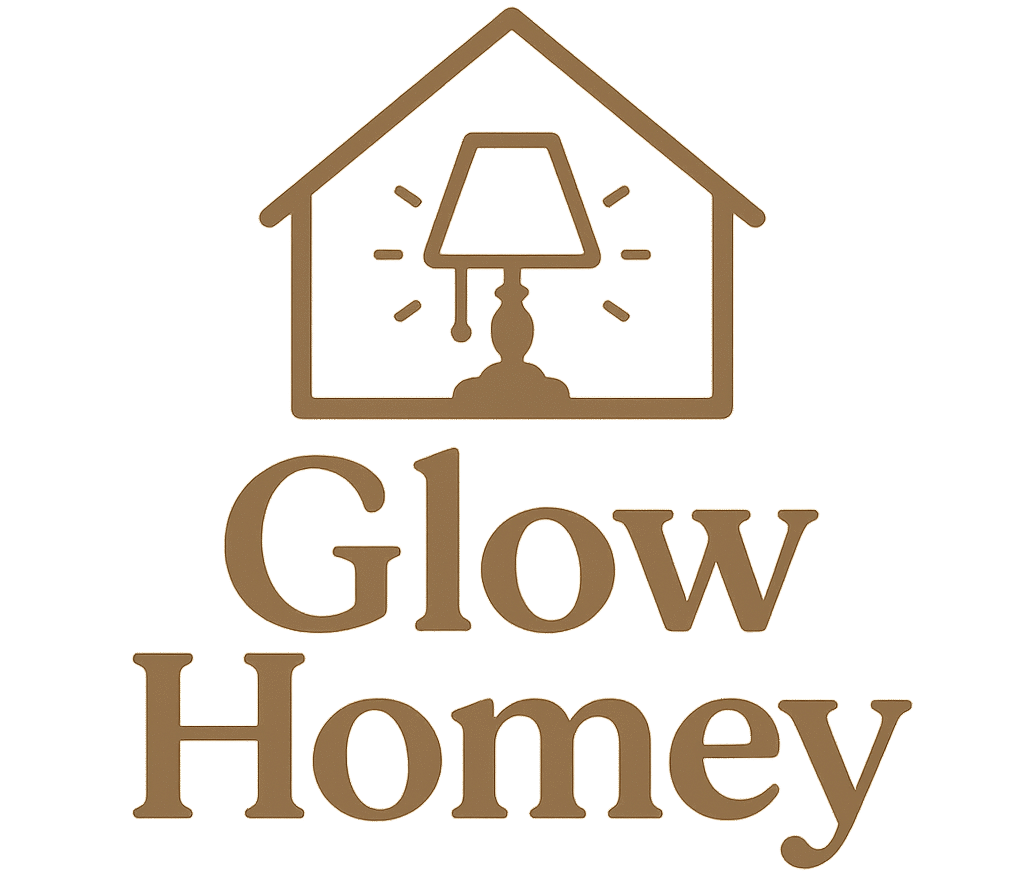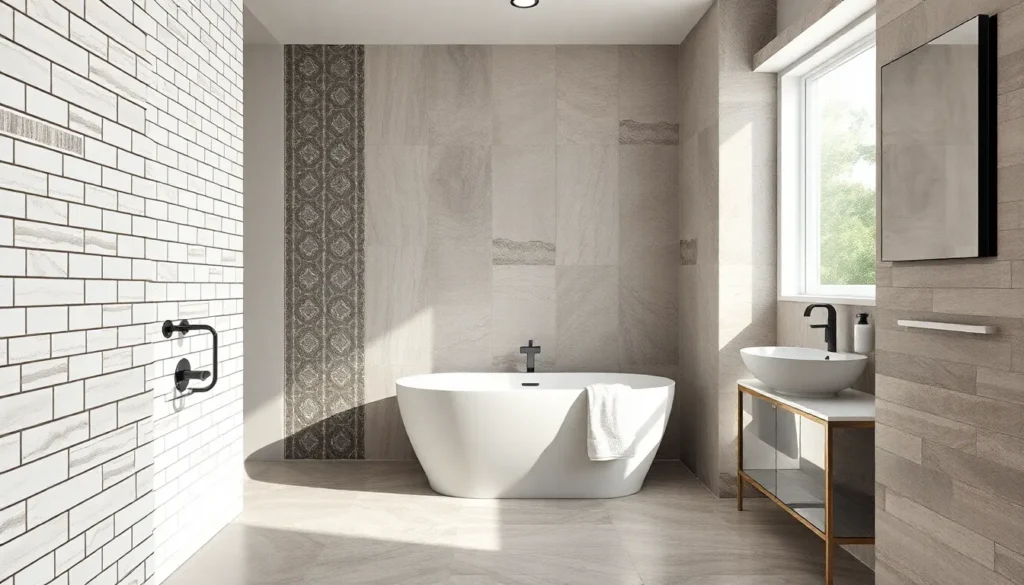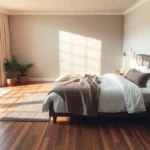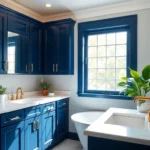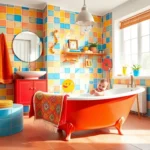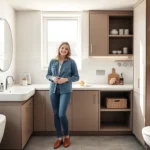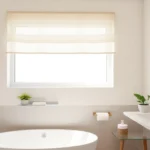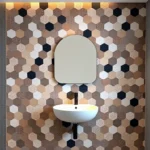Transforming your bathroom starts with choosing the perfect tiles that balance style functionality and durability. We’ve spent years helping homeowners navigate the overwhelming industry of bathroom tile options and we know how crucial this decision is for creating your dream space.
Whether you’re planning a complete renovation or simply updating tired surfaces bathroom tiles serve as the foundation of your design vision. From sleek subway tiles that never go out of style to bold geometric patterns that make a statement the right combination of floor and wall tiles can dramatically elevate your bathroom’s aesthetic appeal.
We’ll guide you through the most inspiring bathroom tile ideas that work for every budget style preference and space size. You’ll discover practical answers that don’t compromise on beauty plus expert tips to help you avoid common pitfalls that many homeowners encounter during their tile selection process.
Classic Subway Tile Patterns for Timeless Appeal
Subway tiles remain our top choice for bathroom renovations that stand the test of time. These versatile rectangular tiles deliver enduring style while offering countless pattern possibilities.
Traditional White Subway Tiles with Dark Grout
White subway tiles paired with dark grout create striking visual contrast that emphasizes each tile’s rectangular shape. We recommend charcoal or black grout to make white tiles pop while adding sophisticated definition to your bathroom walls.
Benefits of this classic combination include:
- Enhanced tile visibility that showcases the subway pattern
- Reduced maintenance compared to white grout options
- Versatile backdrop that complements any bathroom color scheme
- Budget friendly approach that delivers high end appearance
Installation works best on shower surrounds where the contrast creates a focal point without overwhelming smaller spaces. Dark grout also hides soap residue and daily wear better than lighter alternatives.
Colored Subway Tiles for Modern Twist
Colored subway tiles offer contemporary updates while maintaining the classic rectangular format we love. Popular choices include soft blues, sage greens, and warm grays that add personality without sacrificing timeless appeal.
Top color selections for modern bathrooms:
- Seafoam green for spa like tranquility
- Dusty blue for coastal inspired themes
- Charcoal gray for industrial elegance
- Cream for warm neutral sophistication
Monochromatic grout maintains clean lines while allowing your chosen tile color to shine. We suggest selecting grout that matches your tile shade closely to create seamless, contemporary walls that feel cohesive and intentional.
Herringbone and Vertical Subway Layouts
Herringbone patterns transform standard subway tiles into eye catching geometric designs that add movement and visual interest. This zigzag arrangement works particularly well as accent walls behind vanities or in shower niches.
Vertical subway installations create height illusions perfect for bathrooms with lower ceilings. Stacking tiles vertically draws the eye upward and makes compact spaces feel more spacious and open.
Pattern considerations for different spaces:
| Layout Type | Best Applications | Visual Effect |
|---|---|---|
| Herringbone | Accent walls, backsplashes | Adds texture and movement |
| Vertical stack | Full walls, shower surrounds | Creates height illusion |
| Horizontal offset | Traditional installations | Classic, balanced appearance |
| Basket weave | Floors, feature areas | Sophisticated geometric pattern |
Professional installation ensures pattern alignment remains consistent throughout your bathroom. We recommend hiring experienced tile setters for complex patterns like herringbone to achieve professional results that enhance your bathroom’s overall design impact.
Natural Stone Tile Options for Luxury Bathrooms
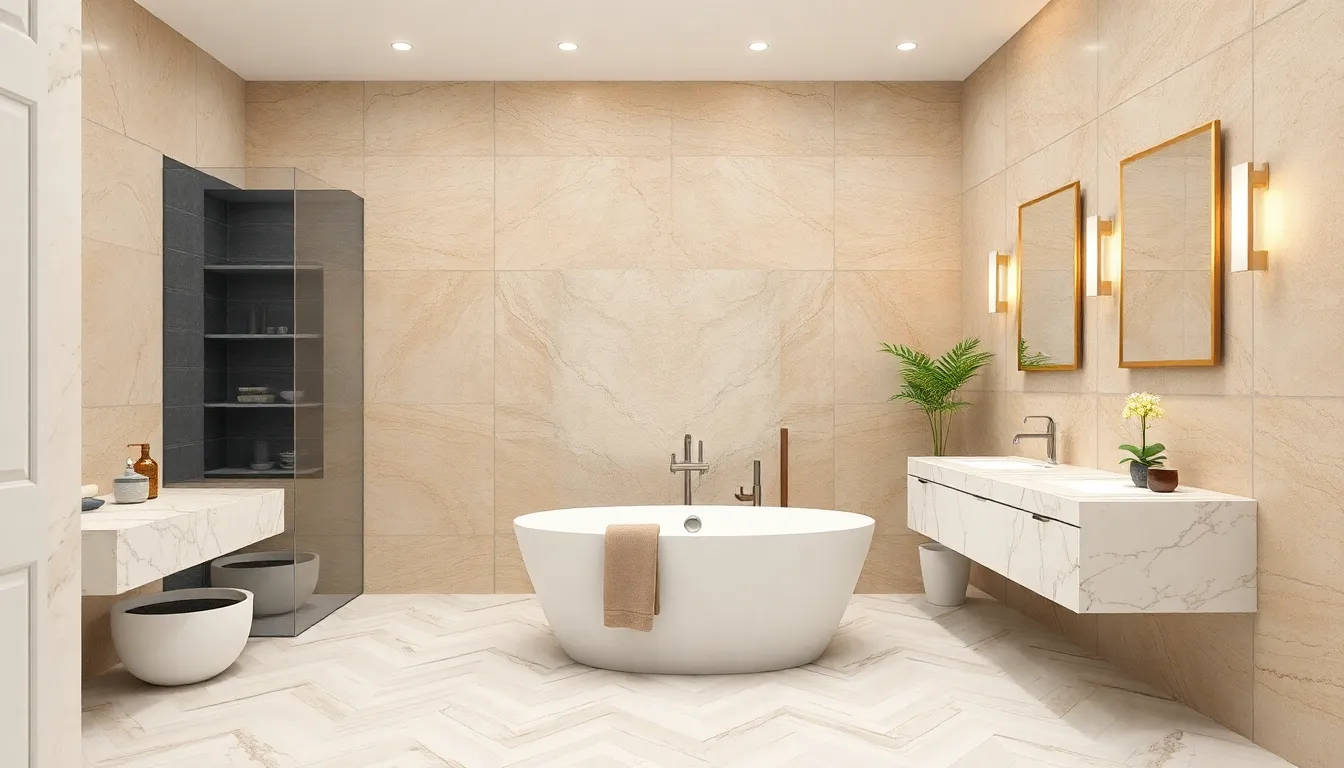
Natural stone tiles elevate bathroom spaces with their inherent elegance and unique character. We’ll explore three premium options that combine stunning aesthetics with practical functionality.
Marble Floor and Wall Combinations
Marble creates a sophisticated foundation for luxury bathrooms through its timeless elegance and remarkable versatility. You can use classic white marble for traditional appeal or select patterned varieties for more distinctive character. Herringbone arrangements add visual interest while maintaining marble’s refined aesthetic.
We recommend using marble on both floors and walls to achieve a cohesive, high-end appearance. This approach creates seamless transitions between surfaces while maximizing the stone’s natural beauty. Professional installation ensures proper sealing and alignment for long-lasting performance.
Travertine Tiles for Warm Elegance
Travertine tiles bring warmth and earthiness to bathroom environments through their naturally textured surfaces. These tiles offer a cozy, inviting atmosphere that works beautifully in both modern and traditional settings. Available colors range from creamy beiges to rich earth tones, allowing for versatile design combinations.
Installing travertine on walls and floors creates a continuous, organic feel throughout the space. The stone’s natural variations ensure each tile contributes unique character to your bathroom design. Consider pairing travertine with warm lighting to enhance its natural golden undertones.
Slate Tiles for Contemporary Edge
Slate tiles deliver contemporary sophistication with their sleek surfaces and rich, dark coloration. These durable stones offer excellent water resistance, making them ideal for high-moisture bathroom environments. Dark charcoal and deep blue-gray tones create dramatic visual impact when paired with modern fixtures.
We suggest using slate as an accent wall or shower surround to create striking focal points. Bright accessories and metallic hardware provide beautiful contrast against slate’s deep colors. The stone’s natural texture adds depth while maintaining clean, modern lines throughout your bathroom space.
Bold Geometric Patterns to Make a Statement
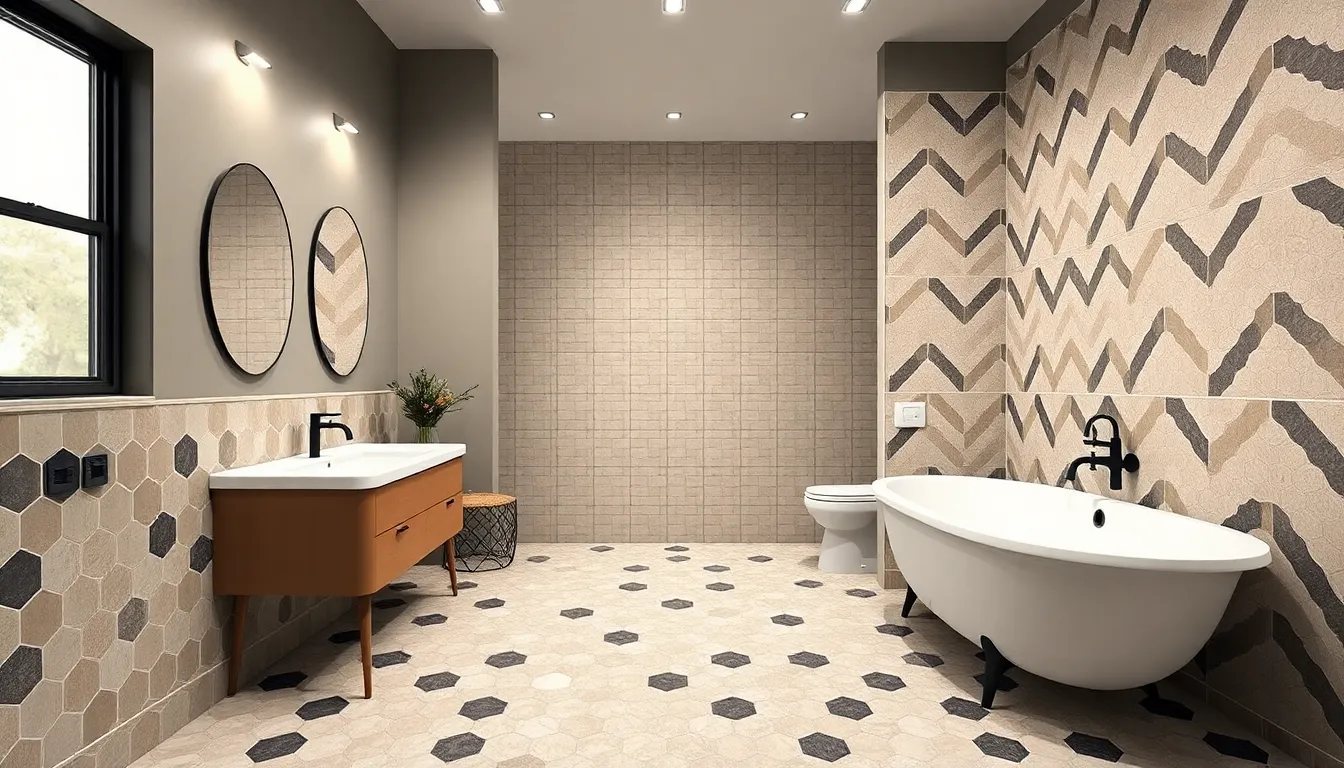
Geometric patterns bring an entirely different energy to bathroom design compared to traditional straight lines and simple layouts. We’re seeing more homeowners embrace bold shapes that create visual drama and transform ordinary spaces into stunning focal points.
Hexagonal Floor Tiles with Coordinating Walls
Hexagonal tiles deliver a vintage aesthetic that never goes out of style in modern bathroom design. We recommend pairing these six-sided beauties on floors with complementary square or rectangular wall tiles to maintain visual cohesion throughout the space. Color mixing becomes particularly effective with hexagon patterns, allowing you to incorporate marble textures or contrasting hues that add depth and personality.
Creating a unified look requires careful consideration of how floor patterns interact with wall treatments. We suggest using neutral hexagonal floor tiles as your foundation, then echoing similar tones in your wall tile selection to establish a harmonious flow. This approach prevents the geometric floor pattern from overwhelming the space while still delivering that distinctive vintage charm.
Diamond and Chevron Tile Arrangements
Chevron patterns create striking V-shaped designs that add immediate visual impact to any bathroom surface. We love combining chevron layouts with diamond mosaic accents to achieve a ever-changing arrangement that draws the eye naturally through the space. Wood look tiles and marble materials work exceptionally well in chevron installations, offering both durability and sophisticated appeal.
Diamond shaped mosaics provide intricate design opportunities for both floors and accent walls. We often recommend using diamond patterns as feature elements that complement larger geometric tiles rather than competing with them. This layered approach creates visual interest without overwhelming the senses, particularly effective in smaller bathrooms where pattern balance becomes crucial.
Mixed Geometric Shapes for Visual Interest
Combining different geometric shapes like hexagons, squares, and rectangles creates spaces with remarkable depth and variety. We encourage experimenting with this mixed approach because it allows for greater creative expression while maintaining functional tile performance. The key lies in selecting shapes that share common color palettes or material finishes to prevent the design from appearing chaotic.
Strategic placement of mixed geometric patterns can define different zones within your bathroom space. We suggest using larger geometric shapes as primary surfaces and smaller patterns as accent details, creating a hierarchy that guides the eye naturally through the room. This technique works particularly well when transitioning between floor and wall surfaces, where shape variation can highlight architectural features or create visual boundaries.
Large Format Tiles for Seamless Modern Look
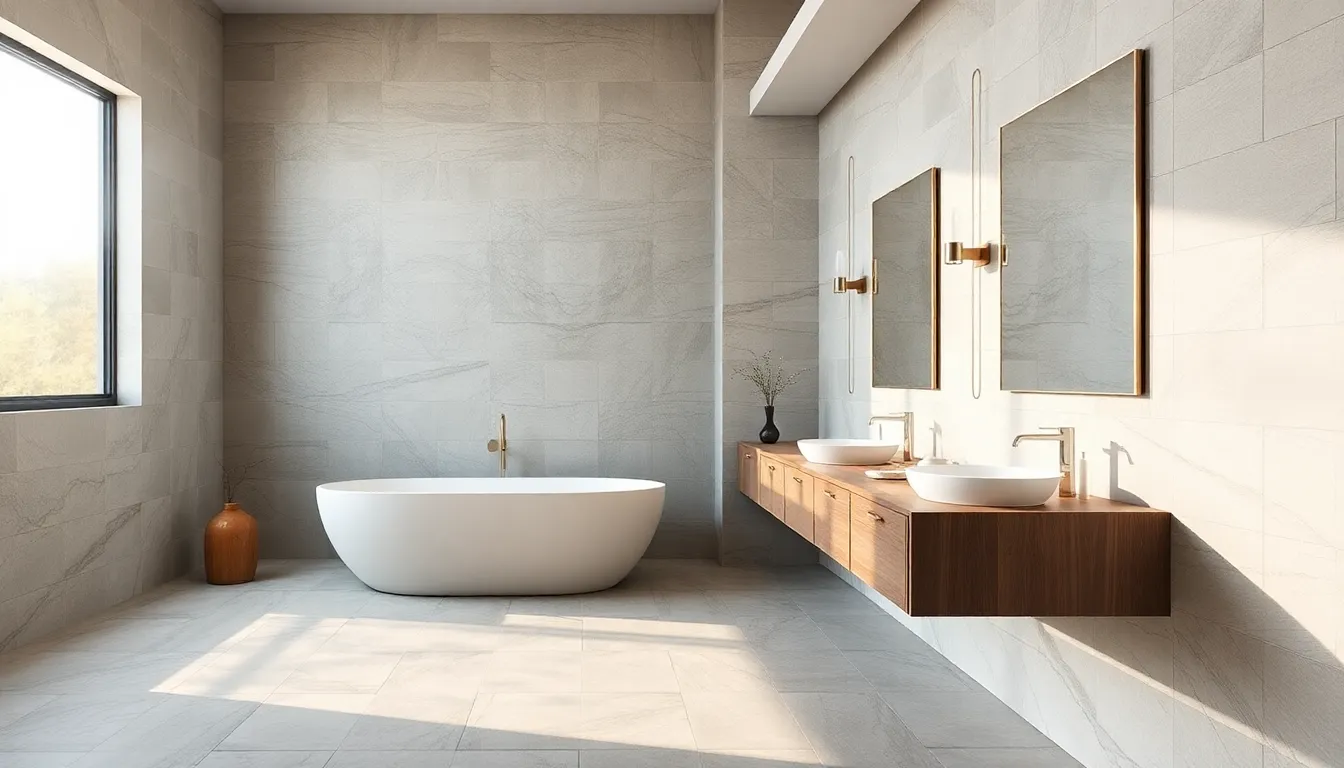
Moving beyond pattern complexity, we’re embracing the power of simplicity with large format tiles that create effortless sophistication. These expansive surfaces transform bathrooms into contemporary sanctuaries while delivering practical benefits.
Oversized Porcelain Slabs
Oversized porcelain slabs deliver luxury without compromise, offering the spa-like ambiance found in high-end hotels. We recommend these massive tiles for their superior strength compared to ceramic alternatives, providing exceptional durability against water and daily wear. Porcelain’s advanced manufacturing process creates surfaces that resist moisture penetration while maintaining their pristine appearance for years.
The impressive scale of these slabs allows us to cover entire walls with minimal interruption, creating dramatic focal points that elevate any bathroom design. Modern porcelain technology offers textures mimicking natural marble, concrete, and wood, giving us unlimited design possibilities without natural stone’s maintenance requirements.
Minimal Grout Lines for Clean Aesthetics
Reduced grout lines become the secret weapon for achieving that coveted modern aesthetic we’re all seeking. Large format tiles naturally minimize these visual interruptions, creating seamless surfaces that appear continuous and polished. This design approach proves particularly beneficial in moisture-rich environments where traditional grout lines might otherwise become highlighted or discolored.
The clean lines enhance our bathroom’s visual appeal while simplifying maintenance routines, since fewer grout joints mean less scrubbing and sealing. We’re able to achieve that magazine-worthy look that appears effortlessly sophisticated yet remains practical for everyday use.
Coordinating Floor-to-Ceiling Applications
Floor-to-ceiling coordination using large format tiles creates the ultimate unified look that visually expands any bathroom space. We can use identical tiles throughout to establish continuity, or select complementary sizes from the same collection for subtle variation. This approach works exceptionally well in both spacious master baths and compact powder rooms.
The continuous surface treatment eliminates visual breaks that might otherwise fragment the space, making even modest bathrooms feel more expansive and luxurious. Strategic placement of these coordinated applications helps define different zones within the bathroom while maintaining design cohesion throughout the entire space.
Textured and Dimensional Tile Designs
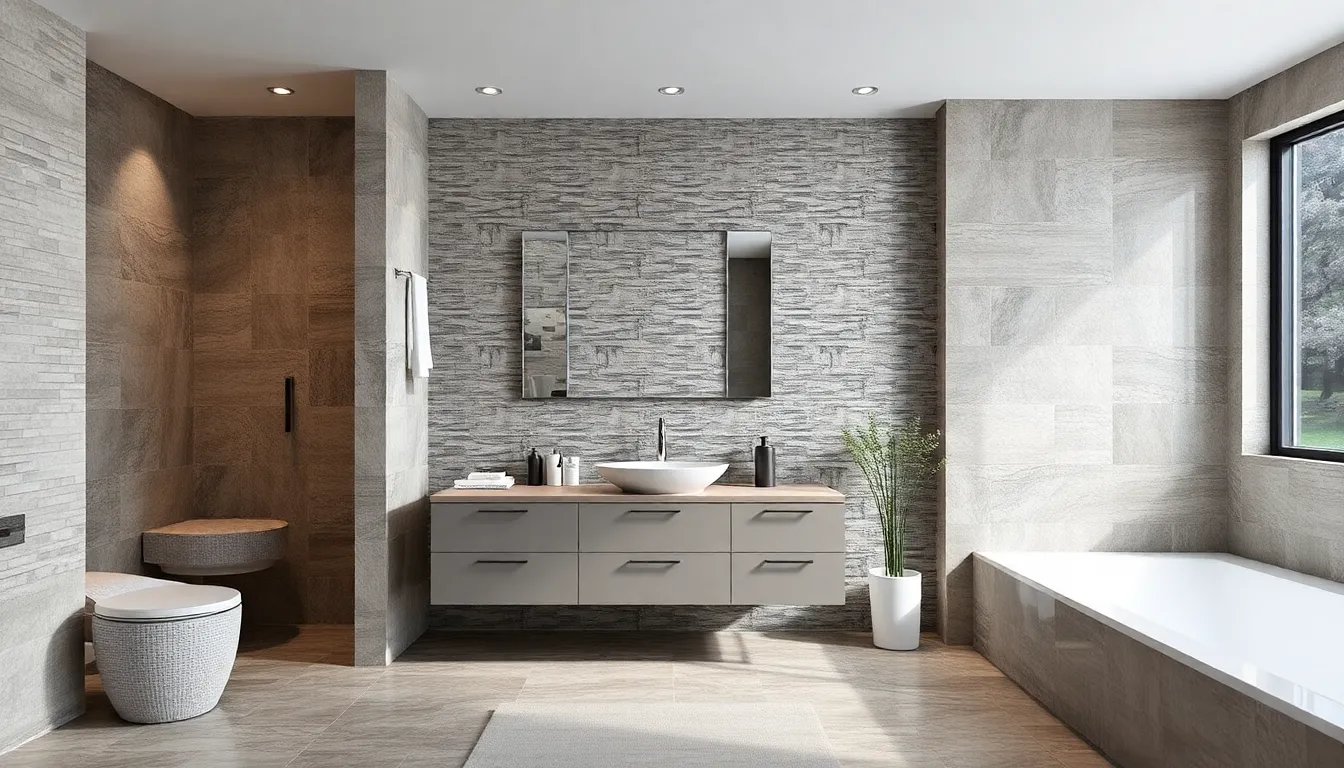
After exploring sleek large format options, we’re seeing textured and dimensional tiles gain tremendous popularity in 2025 bathroom designs. These innovative surfaces add depth and visual interest that transforms ordinary spaces into extraordinary experiences.
3D Wall Tiles for Accent Features
3D wall tiles create striking focal points that instantly elevate your bathroom’s aesthetic appeal. We recommend using these dimensional surfaces on a single accent wall or shower surround to avoid overwhelming the space. Modern bathroom designs benefit from the ever-changing element these tiles provide, making them perfect for creating memorable focal points.
Strategic placement of 3D tiles behind the vanity or as a shower feature wall maximizes their visual impact. These tiles work exceptionally well in contemporary settings where their sculptural qualities can truly shine. Pairing them with simple, flat tiles elsewhere maintains balance while allowing the dimensional features to take center stage.
Textured Stone-Look Ceramics
Textured stone-look ceramics offer the sophisticated appeal of natural stone without the maintenance challenges. We find these tiles particularly valuable because they’re more durable and easier to maintain than actual stone surfaces. Their organic feel brings a sophisticated, natural element to bathroom designs while providing superior performance in high-moisture environments.
Popular variations include limestone-look and sandstone-inspired textures that work beautifully in both modern and traditional bathrooms. These ceramics resist staining and require minimal sealing compared to natural stone alternatives. Installing them on both floors and walls creates a cohesive, spa-like atmosphere that feels both luxurious and practical.
Relief Pattern Tiles for Tactile Appeal
Relief pattern tiles provide both visual and sensory experiences through their raised surface designs. We appreciate how these tiles engage multiple senses, creating unique and memorable bathroom environments. Their tactile qualities make them particularly effective in powder rooms and guest bathrooms where making a strong impression matters most.
Geometric relief patterns work exceptionally well as backsplashes behind floating vanities or as shower niche accents. Wave-inspired designs add movement and fluidity to bathroom walls, while honeycomb patterns create interesting light play throughout the day. These tiles perform best when used sparingly as accent features rather than covering entire walls.
Small Mosaic Tiles for Intricate Details
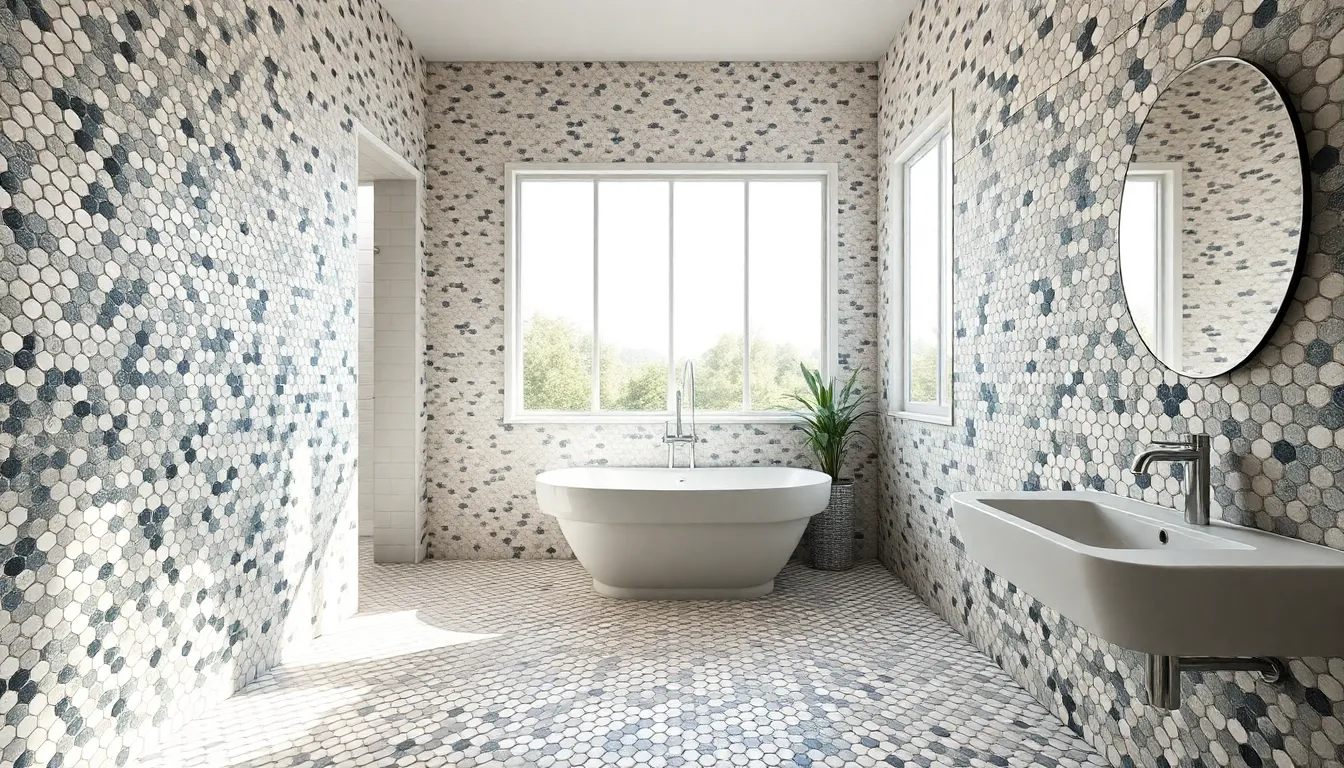
Small mosaic tiles offer unparalleled versatility for creating stunning bathroom designs with intricate patterns and textures. These tiles, typically under 2 inches in size and mounted on mesh sheets, transform ordinary surfaces into captivating focal points that showcase your personal style.
Glass Mosaic Accent Walls
Glass mosaic tiles create breathtaking accent walls that instantly brighten your bathroom space through their light-reflecting properties. We recommend positioning these tiles on feature walls behind vanities or in shower areas where natural light can enhance their luminous effect.
Ever-changing patterns emerge when you arrange glass mosaics in flowing designs, while subtle textures develop through monochromatic color schemes. The reflective surface amplifies available light, making smaller bathrooms feel more spacious and welcoming.
Installation becomes straightforward with pre-mounted mesh backing, allowing you to achieve professional results without extensive tile experience. Color options range from classic whites and blues to bold jewel tones, ensuring perfect coordination with your existing bathroom palette.
Penny Round Tile Floors
Penny round tiles bring vintage charm to modern bathrooms through their distinctive circular shape and cohesive appearance. These small format tiles work exceptionally well on bathroom floors, creating visual continuity that connects different design elements throughout the space.
Cleaning becomes effortless thanks to the smooth surface texture of penny rounds, which resists dirt accumulation and simplifies maintenance routines. We’ve found that white penny tiles paired with dark grout create striking definition, while neutral tones offer timeless appeal.
Installation patterns vary from traditional grid layouts to more creative arrangements that emphasize the tile’s unique geometry. The curved edges soften harsh lines in contemporary bathrooms, adding organic flow to otherwise angular spaces.
Mixed Material Mosaic Combinations
Mixed material mosaics combine glass, stone, and ceramic elements to create truly custom bathroom surfaces with exceptional depth and visual interest. We recommend this approach for homeowners seeking unique designs that reflect their individual style preferences.
Texture variations develop naturally when different materials interact, creating tactile surfaces that engage multiple senses. Stone elements add warmth and natural appeal, while glass components contribute shine and brightness to balance the overall composition.
Design possibilities expand exponentially with mixed materials, allowing you to incorporate metallic accents, natural stone textures, and colored glass in coordinated patterns. Professional installation ensures proper material compatibility and long-lasting performance in high-moisture bathroom environments.
Color coordination becomes crucial when combining multiple materials, so we suggest selecting a unifying palette that ties all elements together harmoniously.
Wood-Look Tiles for Warm Natural Feel
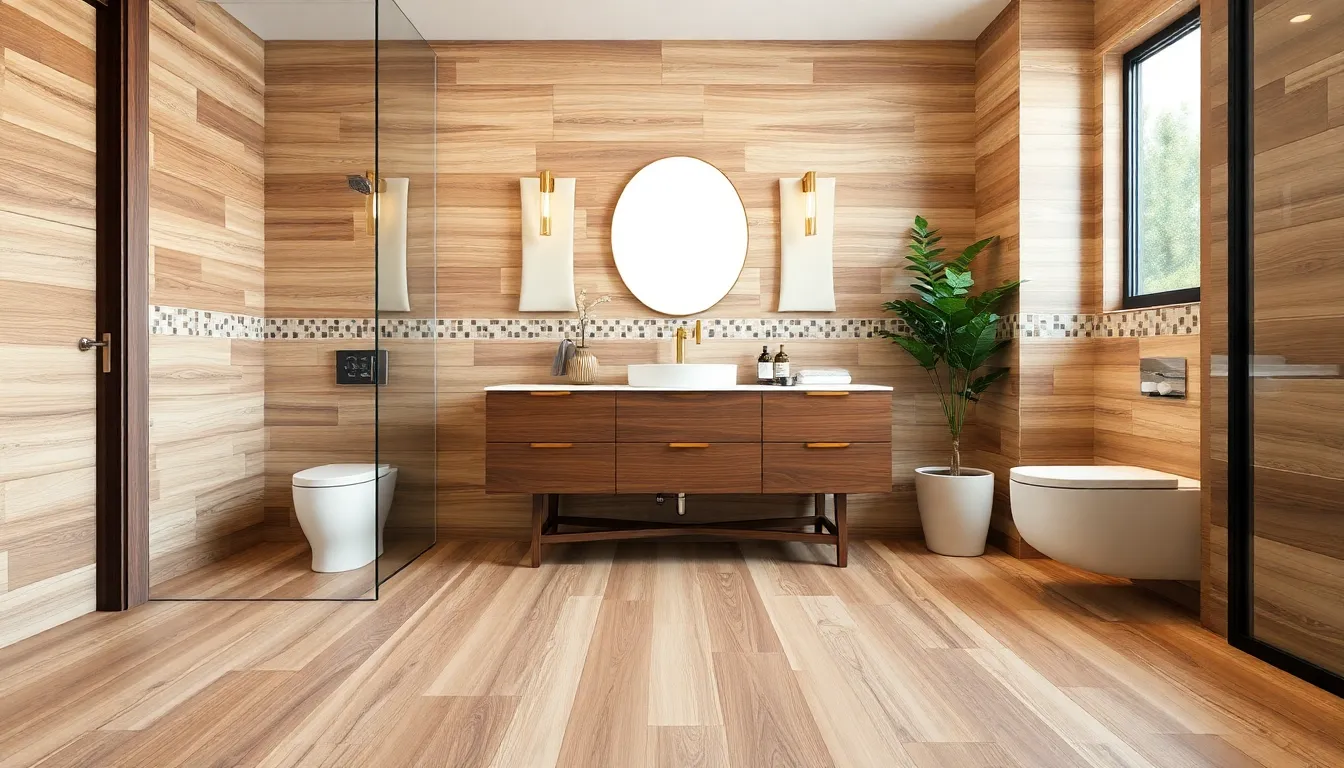
Wood look tiles bring the cozy aesthetics of natural wood into your bathroom without the maintenance concerns that come with real timber. These versatile tiles offer the perfect solution for creating a spa like atmosphere while maintaining the practicality needed in high moisture environments.
Porcelain Wood Planks on Floors
Porcelain wood planks deliver exceptional durability while perfectly mimicking the appearance of real hardwood flooring. We recommend these tiles for bathroom floors because they withstand moisture exposure better than any natural wood option while offering superior scratch resistance.
Different color variations range from light oak tones to rich walnut finishes, giving you flexibility to match your desired aesthetic. Modern porcelain technology creates realistic wood grain textures that feel authentic underfoot while providing the slip resistance essential for bathroom safety.
Installation patterns can vary from traditional straight layouts to more ever-changing diagonal arrangements that make smaller bathrooms appear larger. Professional installation ensures proper waterproofing beneath these planks, protecting your subfloor from potential moisture damage.
Coordinating Wood-Look Wall Tiles
Coordinating wood look wall tiles create visual harmony throughout your bathroom space by extending the floor’s aesthetic up the walls. We suggest using complementary tones rather than exact matches to add depth and prevent the space from feeling monotonous.
Vertical installation of wood look wall tiles can make your bathroom ceiling appear higher, which works particularly well in compact spaces. Accent walls featuring these tiles behind vanities or in shower areas create focal points that draw attention to exact design elements.
Texture variations between floor and wall tiles add visual interest while maintaining the cohesive wood theme. Lighter wall tones paired with darker floor planks create an airy feeling that makes bathrooms feel more spacious and welcoming.
Mixing Wood Tones with Other Materials
Mixing wood tones with materials like marble, quartz, or glass creates sophisticated design combinations that elevate your bathroom’s overall appeal. We’ve found that pairing warm wood look tiles with cool marble accents produces striking visual contrast that feels both modern and timeless.
Natural stone elements like travertine or slate complement wood tones beautifully, creating an organic feel that connects your bathroom to nature. Metal accents in brushed gold or matte black fixtures provide the perfect finishing touches to wood and stone combinations.
Glass mosaic inserts within wood look tile installations add sparkle and light reflection that brightens the entire space. Strategic placement of these mixed materials can define different functional zones within your bathroom while maintaining design cohesion throughout the room.
Dark and Dramatic Tile Color Schemes
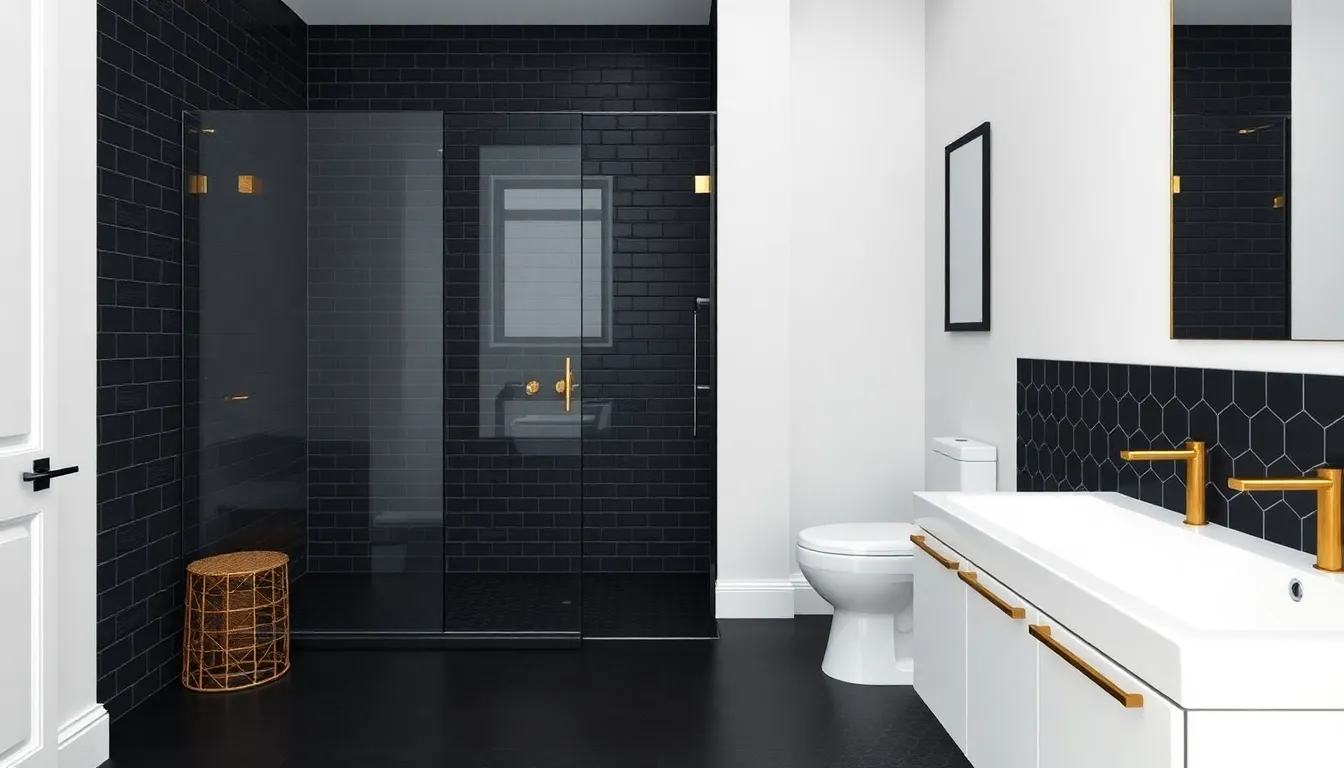
We’re seeing a bold shift toward darker, more dramatic tile palettes that create stunning visual impact in today’s bathroom designs. These sophisticated color schemes offer a perfect way to add depth and luxury to your space.
Black Tile Floors with Contrasting Walls
Black tile floors paired with lighter colored walls create an instantly striking visual contrast that transforms any bathroom into a modern sanctuary. We recommend using matte black porcelain tiles for flooring to achieve that sleek, contemporary look without overwhelming the space. Contrasting these dark floors with crisp white or warm gray walls helps balance the dramatic effect while maintaining visual interest.
Strategic placement of black tiles can make your bathroom feel larger by creating depth and definition between different areas. Consider extending black tiles partway up the walls as wainscoting to create a sophisticated transition between floor and wall surfaces. This approach works particularly well in powder rooms where you want maximum impact in a smaller space.
Deep Navy and Charcoal Combinations
Deep navy tiles paired with charcoal accents create a sophisticated color palette that feels both calming and luxurious. We love using navy blue subway tiles on shower walls combined with charcoal hexagonal floor tiles for a cohesive yet varied look. This combination works exceptionally well in bathrooms with ample natural light.
Charcoal and navy combinations allow for subtle variation within the dark color family without creating harsh contrast. Consider using different tile sizes and textures within this palette to add visual interest while maintaining the overall dramatic effect. Glossy navy wall tiles can reflect light beautifully while matte charcoal floors provide practical slip resistance.
Metallic Accents with Dark Tiles
Metallic accents transform dark tile installations from dramatic to absolutely luxurious when used strategically throughout your bathroom design. We suggest incorporating gold or bronze metallic tiles as border accents around dark shower niches or as decorative inserts within black or charcoal tile fields. These metallic elements catch and reflect light beautifully against darker backgrounds.
Silver and chrome metallic accents work particularly well with cooler dark tones like deep grays and charcoals. Consider using metallic penny tiles as accent strips or creating metallic geometric patterns within your dark tile layout. The key is using metallic elements sparingly to create focal points rather than overwhelming the space with too much shine.
Light and Bright Tile Ideas for Small Spaces
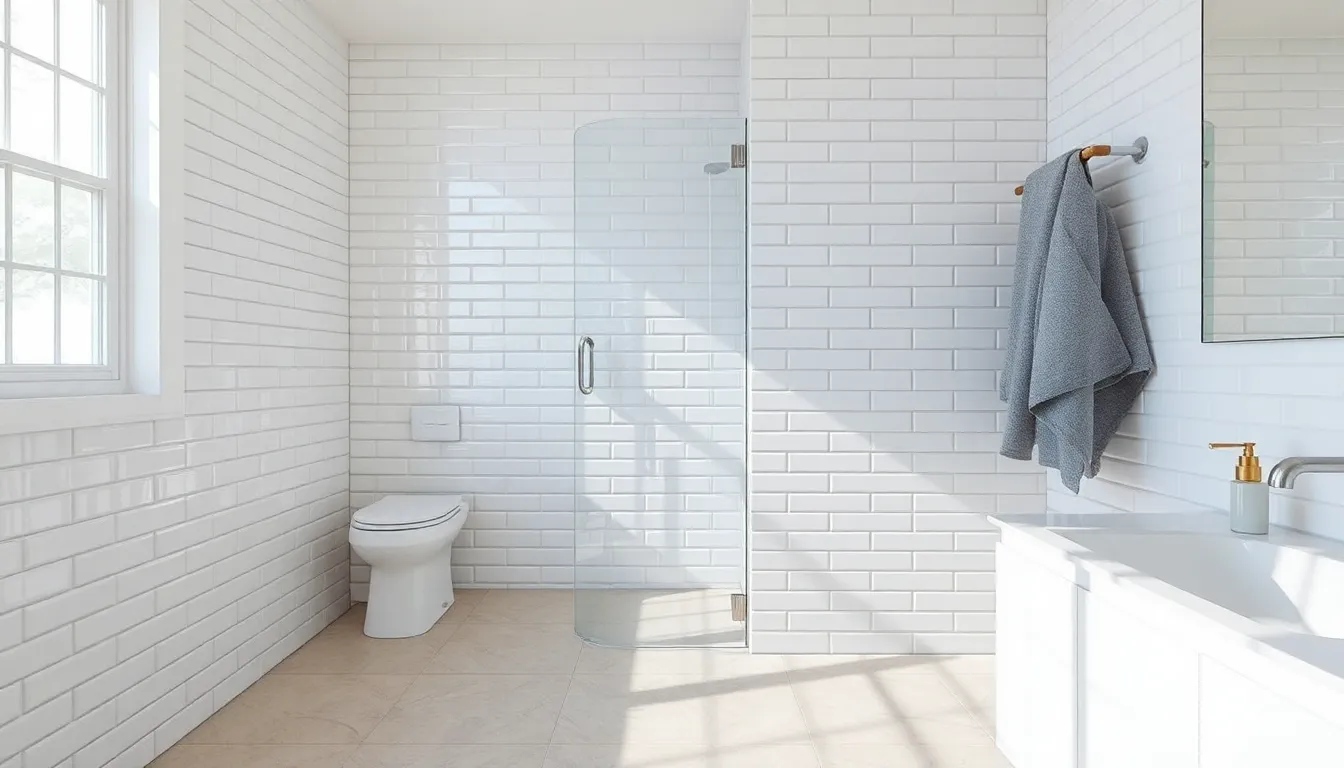
Light and bright tiles transform cramped bathrooms into spacious retreats through strategic color and finish choices. These selections maximize natural light reflection while creating an open, airy atmosphere that makes small spaces feel dramatically larger.
White and Light Gray Combinations
White and light gray combinations create the perfect foundation for small bathroom designs that prioritize brightness and modern appeal. These versatile color pairings work exceptionally well on both walls and floors, offering a clean aesthetic that reflects natural light throughout the space. Pairing white subway tiles with light gray flooring establishes visual contrast without overwhelming the room’s proportions.
Light gray accent walls paired with white ceramic floors provide depth while maintaining the space’s bright, open feel. We recommend using glossy white tiles on shower walls to maximize light reflection, then incorporating light gray elements through border tiles or flooring to add subtle sophistication. This combination works particularly well in bathrooms with limited windows, where maximizing available light becomes crucial for creating a welcoming environment.
Cream and Beige Neutral Palettes
Cream and beige neutral palettes offer warmth and sophistication while maintaining the light, open feel essential for small bathroom spaces. These softer alternatives to stark white provide a more inviting atmosphere without sacrificing the brightness that makes compact bathrooms feel larger. Beige large format tiles on floors paired with cream subway tiles on walls create a cohesive, spa like environment.
Mixing cream porcelain tiles with beige stone look ceramics adds texture variation while keeping the overall palette light and unified. We suggest using cream tiles as the primary color for walls and incorporating beige accents through border tiles or shower niches to create visual interest. This approach maintains the space expanding qualities of light colors while introducing enough contrast to prevent the design from feeling flat or monotonous.
Reflective Tiles to Maximize Light
Reflective tiles amplify available light by bouncing it around the room, creating a brighter atmosphere even in bathrooms with limited natural light sources. Glossy porcelain and ceramic tiles offer excellent light reflection properties, making them ideal choices for small bathroom walls and floors. Metallic finishes on accent tiles can further enhance light distribution while adding sophisticated design elements.
Large format glossy tiles minimize grout lines while maximizing reflective surfaces, creating a seamless look that enhances the illusion of space. We recommend using high gloss white or light colored tiles on the largest wall surfaces to create the most dramatic light amplification effect. Strategic placement of reflective tiles near windows or light fixtures multiplies the available brightness, making even the smallest bathrooms feel more spacious and welcoming.
Mix and Match Tile Combinations
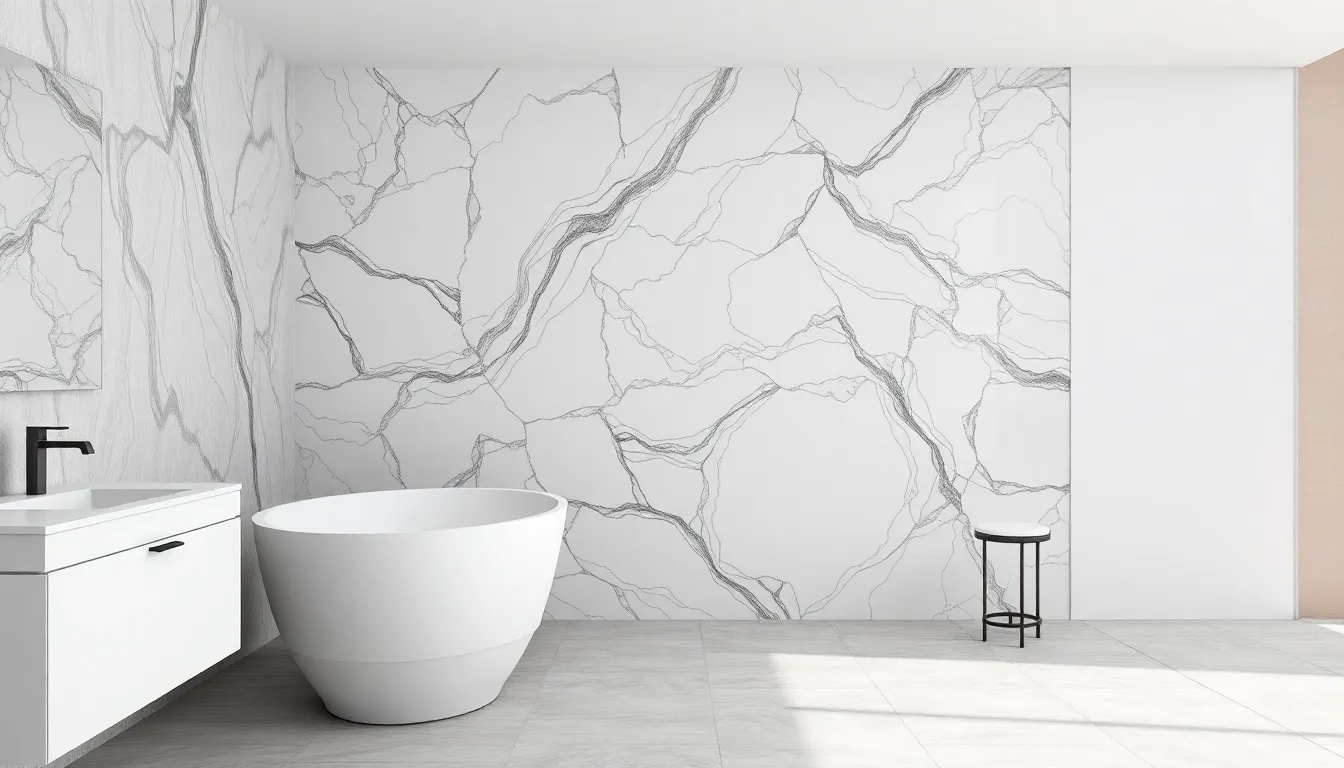
Creating harmonious tile combinations elevates your bathroom design while maintaining visual interest. We’ll explore proven strategies for pairing different tiles to achieve professional-looking results.
Coordinating Floor and Wall Patterns
Symmetrical approaches using large marble slabs on walls paired with simpler contrasting floor tiles create stunning visual balance. This technique allows the dramatic veining of marble to take center stage while the floor provides a stable foundation.
Pattern mixing works beautifully when you balance complexity levels between surfaces. Herringbone-patterned wall tiles with their glossy finish create movement and reflection, while simple rectangular floor tiles maintain visual calm and prevent overwhelming the space.
Scale coordination helps establish proper proportions in your bathroom design. Large format wall tiles paired with smaller patterned floor tiles create depth without competing for attention, making even compact bathrooms feel more spacious.
Accent Walls with Complementary Floor Tiles
Marble and terracotta combinations offer sophisticated contrast that feels both timeless and contemporary. The cool elegance of marble wall tiles balances perfectly with the warm earthiness of terracotta floor tiles, creating visual tension that energizes the space.
Monochrome gradient effects on accent walls paired with simple patterned floors deliver cohesive elegance. This approach uses varying shades of the same color family to create depth while maintaining harmony throughout the bathroom.
Textural contrasts between smooth wall tiles and textured floor surfaces add tactile interest. Glossy subway tiles on the accent wall can complement matte hexagonal floor tiles, creating layers of visual and physical texture that enhance the overall design experience.
Tone on Tone Matching
Color carrying techniques involve selecting one hue from your primary tile and repeating it in secondary selections. Beige wall tiles paired with deeper beige floor tiles create sophisticated depth without jarring transitions, while rust colored accents can tie the entire palette together.
Neutral and bold pairings maximize visual impact through strategic contrast. Bright colored wall tiles become stunning focal points when balanced with neutral floor selections, allowing you to incorporate personality without overwhelming the space.
Transitioning Between Different Tile Styles
Layered installations create depth and functionality through strategic height variations. Half or three quarter high tile installations provide water protection while creating natural transition points between different materials and patterns.
Material mixing combines different tile types like marble and ceramic for unique visual effects. This approach allows you to incorporate luxury materials strategically while maintaining budget consciousness and design cohesion.
Graduated transitions help different tile styles flow naturally into each other. Using border tiles or trim pieces creates clean lines between contrasting materials, ensuring professional-looking installations that enhance rather than distract from your overall bathroom design.
Conclusion
We’ve explored a comprehensive range of tile options that can transform your bathroom into a stunning and functional space. From timeless subway patterns to dramatic dark schemes each approach offers unique benefits for different design goals and budgets.
The key to successful bathroom tile selection lies in balancing your personal style with practical considerations like moisture resistance and maintenance requirements. Whether you choose luxurious natural stone or modern large-format tiles the right combination will create a space you’ll love for years to come.
Remember that professional installation often makes the difference between a good project and an exceptional one. Take time to plan your design carefully and don’t hesitate to mix materials and patterns to achieve a truly personalized result that reflects your unique vision.
Frequently Asked Questions
What are the most popular tile options for bathroom renovations?
The most popular bathroom tile options include classic subway tiles, natural stone tiles (marble, travertine, slate), large format porcelain tiles, and wood-look tiles. Each offers unique benefits: subway tiles provide timeless appeal, natural stone adds luxury, large format tiles create modern seamless looks, and wood-look tiles bring warmth without maintenance concerns.
How do I choose between different tile materials for my bathroom?
Consider your budget, maintenance preferences, and design goals. Natural stone offers luxury but requires more upkeep. Porcelain provides durability and low maintenance. Glass mosaics reflect light beautifully. Wood-look tiles give warmth without real wood’s moisture issues. Match the material to your bathroom’s moisture levels and usage frequency.
What tile patterns work best in small bathrooms?
Light-colored tiles, large format options, and vertical subway tile layouts work best in small bathrooms. These choices create the illusion of more space. Avoid busy patterns and dark colors that can make spaces feel cramped. Reflective finishes and minimal grout lines also help maximize the sense of openness.
Can I mix different tile styles in one bathroom?
Yes, mixing tile styles can create stunning results when done thoughtfully. Use coordinating colors and maintain consistent scale proportions. Popular combinations include pairing geometric patterns with solid tiles, mixing textures while keeping similar tones, or using accent walls with complementary floor tiles to define different zones.
What’s the difference between ceramic and porcelain tiles for bathrooms?
Porcelain tiles are denser, less porous, and more water-resistant than ceramic tiles, making them ideal for high-moisture bathroom areas. Porcelain also offers better durability and stain resistance. While ceramic tiles are more affordable, porcelain provides superior performance for bathroom floors and shower areas where moisture exposure is constant.
How important is grout color selection?
Grout color significantly impacts your tile’s overall appearance. Dark grout with light tiles creates striking contrast and hides dirt better. Light grout maintains a seamless look but requires more maintenance. Consider your cleaning preferences and desired aesthetic. Contrasting grout can make patterns more pronounced, while matching grout creates subtlety.
Should I hire a professional for tile installation?
Professional installation is recommended for complex patterns, natural stone tiles, large format tiles, and intricate layouts like herringbone or geometric designs. While simple subway tile installations might be DIY-friendly, professionals ensure proper waterproofing, alignment, and finishing that prevents costly future repairs and maintains warranty coverage.
What are the current trends in bathroom tile design for 2025?
Current trends include textured and 3D tiles for accent walls, bold geometric patterns, oversized porcelain slabs, mixed material mosaics, and dramatic dark color schemes. Wood-look tiles and penny round mosaics are also popular. The focus is on creating statement walls while maintaining functionality and incorporating multiple textures for visual interest.
